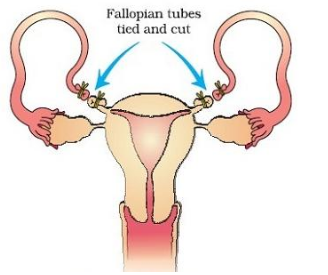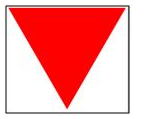Population
Exercise 1
Solution A.1.
(d) Use of antibiotics and prophylactic vaccinations
Solution A.2.
(a) Per 1000 people per year
Solution B.1.
Demography
Solution B.2.
(i) Tubectomy (For Female)
(ii) Vasectomy (For Male)
Solution C.1.
(a) True
(b) False
Solution C.2.
It is approximately 7 billion.
Solution C.3.
(a) Birth Rate: It is the number of live births per 1000 people of population per year.
(b) Death Rate: It is the number of deaths per 1000 of population per year.
(c) Rate of growth of population: It is the difference between the birth rate and the death rate. As long as the birth rate exceeds the death rate, the population grows. If the birth rate is lower than the death rate, the population declines.
(d) Population density: It is the number of individuals per square kilometre (Km2) at any given time.
(e) Exhaustible resource: Exhaustible resources are the once which are perished by the prolonged us and they can never be renewed or replaced.
Solution C.4.
(a) False.
Dog was the first domesticated animal.
(b) True.
Rapidly growing industries made human life more and more comfortable,
with greater opportunities of jobs and with more production of food. All
this favoured population rise.
(c) False.
Present human population growth is following geometrical progression.
(d) False.
Birth Rate (natality) is the number of live births per 1000 people of population per year.
(e) False.
Vasectomy is the surgical method of contraception in human males while tubectomy is the surgical method used in females.
Solution C.5.
The rate of growth of population of the world is 1.092% (this rate
results in about 145 net additions to the worldwide population every
minute or 2.4 every second {2011 estimates}) and for India is 1.344%.
Solution C.6.
By law the minimum age is 21 years for boys and 18 years for girls.
Solution C.7.
Two advantages of small family are:
- Parents can give more attention to their children.
- Small family helps every country in controlling the growth of population.
Solution C.8.
- Illiteracy:
Most of the rural population which forms the bulk of our society is still illiterate, ignorant and superstitious.
They also do not know the functioning of the human reproductive system. - Traditional Beliefs:
Among the people from lower strata of the society, children are regarded as a gift of God and a sign of prosperity.
Therefore, they make no effort to avoid pregnancy.
Solution C.9.
Population growth is not the only threat humanity is facing, but it will
be a major contributor to the crises that await us and the planet in
the coming century. Overpopulating the planet puts us all at risk of
extreme environmental and social consequences that we are beginning to
witness today. The extreme growth in human population is mortally taxing
the Earth and its resources. Each individual person has a unique impact
on the planet’s environment. Some people may be relatively less
damaging than others, but no living individual is without an ecological
footprint. In other words, each person needs basic resources and almost
all people aspire to utilize significantly more resources than are
required by their basic needs. As a result, the Earth is attempting to
impose its own checks on human population. We can witness these “checks”
in the form of widespread disease and the emergence of new disease
strains, food and water shortages, poor harvests and violent and
destructive weather caused by climate change. While it should be obvious
that the Earth is a finite sphere and cannot endure infinite growth by
any single species, we should also remember that Earth’s current
web-of-life is the result of billions of years of complex evolution. It
is irreplaceable. When we look forward to the next 40 years, the most
significant population increases will take place in the areas of our
world where natural resources and the infrastructure of modernity are
already the scarcest. 95% of the human population growth is occurring in
countries already struggling with poverty, illiteracy and civil unrest.
It will further stress, the already strained ecological systems and
worsen poverty in much of the developing world, thus aggravating threats
to international security.
Thus, the statement made by an author ‘some great author has said that a population explosion is far more dangerous than an atomic explosion’ is true.
Solution C.10.
Poverty and population have been closely linked ever since the world
faced changes due to the major revolutions. Poverty has its own effects
on the population and vice versa. Poverty prevails because of illiteracy
and traditional beliefs in the economically weaker strata. Since
illiteracy and traditional beliefs prevail the people from this stratum,
they regard children as gift of God and a sign of prosperity. They
consider children to be helping hands in increasing the family income,
hence they keep producing more children forgetting that their current
situation would do no good for the children and they would add more to
this already overburdened poverty strata. Hence, the population keeps on
rising and so does poverty. As the population increases the quality of
life goes down.
Solution C.11.
- Tool making revolution.
- Agricultural revolution.
- Scientific industrial revolution.
Solution C.12.
According to census, the Indian population in 1981 was 685 million and it was 846 million in 1991.
Solution C.13.
Yes, there could be a corresponding operation made in women. The name of
the surgical procedure in females is ‘tubectomy’. In tubectomy, the
abdomen is opened and the fallopian tubes (oviducts) are cut or ligated
i.e. tied with nylon thread to close the passage of the egg.

Solution C.14.
Family welfare centres are those places where any help or advice about
family planning is available free of cost. These places could be any
hospitals, dispensaries, etc. The inverted red triangle is the symbol of
family welfare in India.

Solution C.15.
Below are some of the advantages of having a small family:
- Financial condition of family is deeply related to the size of the family. A living cost of a large family is surely much higher than a small family. A large family has more expenses on cloth, toys, education and food whereas expenses in small family are very low.
- Parents can easily fulfill the needs of one or two children. They can provide them best education and look after them very well whereas when there are many children to look after parents just cannot fulfill even the basic needs of the children properly. Therefore, as a result, children suffer, the parents suffer and the nation suffers.
- A child in a small family receives more support from their parents than in a large family. In large family, parents have many children to look after, so they cannot give their best support to everyone whereas in small family parents can give more support to children as they have only one or two children to look after.
- Family size also affects the health, especially that of the mother and the child. Frequent pregnancies can cause illness to both the mother and the children. It can disrupt the health of the women. It puts mother and baby’s health at risk. So having a small family definitely leads to healthy and happy family.
Solution D.1.
- Food: The first and most important need of the humans (or any living organism) is food. But with the production of food rising by arithmetic progression and population growing by geometric progression i.e. the number at each step is being multiplied. At the same time growing population is increasing the use of more and more agricultural land to build houses. Thus it is evident that food would be running short for the unchecked rising population.
- Water: Availability of clean and germ-free water for drinking purposes would be more and more scarce with increase in population; the reason would be mainly, the pollution of rivers, ponds, lakes etc.
- Land: Man is bringing more and more land under cultivation and also using up land for building more residential colonies, factories and industries. Usable land would thus become less and less available.
Solution D.2.
- The orthodox view, to have at least one son especially in Indian society, should be modified with education. People should be educated that their greed for a son can lead to numerous children in the household which would worsen both their family’s health and wealth. They should focus on proper upbringing of the child, be it a son or a daughter.
- Married couples should be educated to delay the birth of their first child, to space the second with a sufficient interval for proper upbringing and to stop the third. They should also be educated to adopt family planning methods by which they can prevent pregnancy after two children. These include devices for both men and women, for example: Condoms, intrauterine devices (IUD) and oral pills.
Solution D.3.
For developing countries like India, population explosion is a curse and
is damaging the development of the country and its society. The
developing countries are already facing a lack in their resources, and
with the rapidly increasing population, the resources available per
person are reduced further, leading to increased poverty, malnutrition,
and other large population-related problems. The literal meaning of
population is “the whole number of people or inhabitants in a country or
region”, and the literal meaning of population explosion is “a
pyramiding of numbers of a biological population”. As the number of
people in a pyramid increases, so do the problems related to the
increased population. Some of the reasons for this population explosion
are poverty, better medical facilities, and immigration from the
neighboring countries. The population in India continues to increase at
an alarming rate. The effects of this population increase are evident in
the increasing poverty, unemployment, air and water pollution, and
shortage of food, health resources and educational resources.
Solution E.1.
(a) B; 1981; 1991.
(b) B; 1981; 1991.
(c) B; 1971; 1981.
Comments
Post a Comment